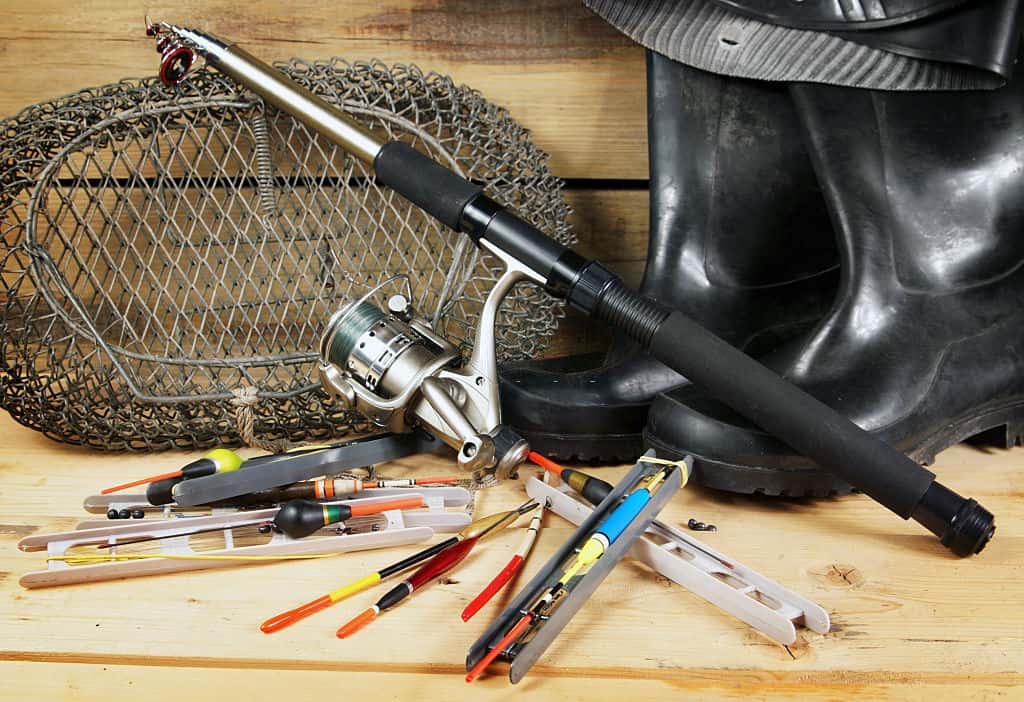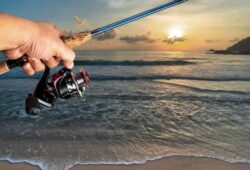Bobbers are an integral part of fishing, keeping the bait on the surface, away from the water bottom. The bobber pulls down when fish bites, so you can keep track of the fishing line. They also make it easier for you to detect if you caught something.
So if you’re a beginner, one of the first things to learn about is how to attach a bobber to a fishing line. Read on as I show you a quick guide to do so properly.
Contents
How to Attach a Bobber to a Fishing Line

Bobbers are supposed to be attached to your fishing line so you can present your bait at accurate and pre-determined depths. There are different bobbers you can invest in, with spring bobbers being the most popular. These bobbers will attach directly to your fishing line and are easier to use.
To attach your bobber to the fishing line, here are the steps to follow:
1. Prepare Your Gear
Before starting, you will need to prepare your fishing rod and reel, the fishing line, and the bobbers.
Be sure that your baitcasting reel already has the line prepared, then press the button of the spin-cast reel, or if you have a spinning reel, open its bail. This will release the line from your reel, and you can pull out enough line so you can thread it wound the fishing rod’s guides.
Now, attach the hook, using the improved clinch knot when tying your hook to the fishing line.
2. How Far Should the Bait Go?
Now, it’s time to attach the bobber. Determine how far you’d like the bait to go when underwater. For example, if you need to hang your bait about three feet into the water, then you should set the bobber three feet above your bait.
3. Attaching the Bobber’s Bottom
Attach the bobber by pressing a piece of plastic on top of your bobber. This will release a small clip or hook on its bottom.
Afterward, thread its line through your clip and release, and the bobber’s bottom will be affixed to the fishing line. I recommend you use the overhand knot.
To do the overhand knot, make a circle with the fishing line, pulling the end through it. Then, tie another knot to prevent the bobber from moving in another direction. Add split shots between the hook and floater so you can control the depth of your hook.
4. Adjusting the Bobber’s Top
Now, place a finger on where the line is attached, from the bottom of your bobber. Press down the outside edge of the bobber’s top area, which is the plastic piece. This will then show a small clip, similar to the one on the bottom of your bobber.
5. Threading the Line
Thread this line through its clip and release using the overhand knot again, and your bobber is now attached to the fishing line!
You can now take your cast and retrieve it once you feel the bobber starting to sink, indicating a fish bite.
Read More: What Happens If You Fish Without A License? Everything You Should Know
6. Bonus: Adjusting the Bobber Placement
If you want to change your bobber’s placement on the line to adjust how far you want the bait to go underwater, then detach one end of your bobber from the fishing line. One end is still attached, but you’re able to slip your bobber up or down. Once you’re satisfied with your bobber’s placement, secure the untied end by using the overhand knot.
If you want more of a visual on attaching bobbers to fishing lines, try following this helpful video:
Wrapping It Up
You shouldn’t go out for a fishing trip if you don’t know how to attach your bobbers properly! These floating objects are a must-have so you won’t have a difficult time determining when fish have bitten the bait. Once you know how to attach bobbers to your fishing line, you’re a step closer to being a better angler.
I hope that this guide on how to attach a bobber to a fishing line helped you out. So don’t wait any longer and start learning more about using bobbers and fishing equipment correctly. If you want to know more about fishing equipment start with the rod holder to give you more idea




